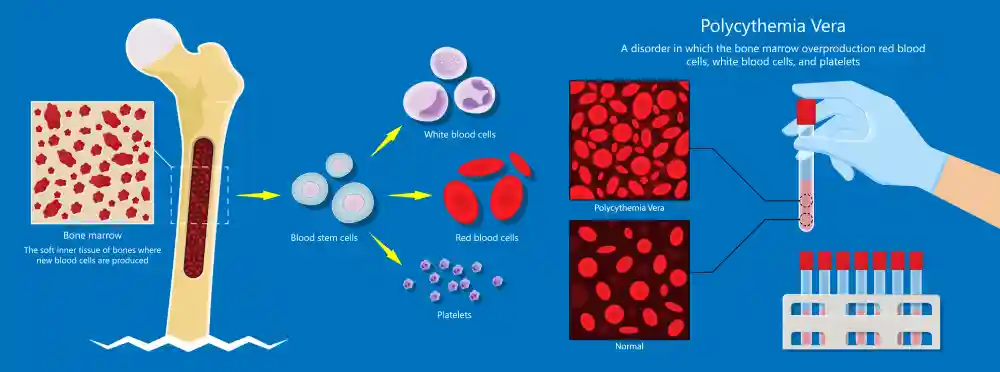Mechanism of its occurrence

As mentioned above, primary myelofibrosis is an uncontrolled division of a line of blood stem cells. However, this is not the only disorder occurring, and the “fibrosis” in the name refers to a fibrous tissue. Fibrous tissue is formed by cells called fibroblasts found all over the body. They are normally activated when a tissue defect occurs to start healing the tissue and forming the scar. In the case of myelofibrosis, however, such activation is uncontrolled and can be as a result of the release of certain chemical substance responsible for the activation of fibroblasts. Those chemical substances are also responsible for the formation of new blood vessels within the bone itself, a characteristic sign seen under the microscope by pathologists. To summarize then: myelofibrosis is a disease of uncontrolled division of blood mother cells, which is also accompanied by excess fibrous tissue as a side effect.
Exposure to radiation and some chemicals can be one of the risk factors of the disease but the main reason remains largely unknown.
Fibrous tissue is not a benign tissue in closed spaces, and its encroachment on the cells that were originally responsible for its formation results in those cells’ death and consequently, a fall in the number of blood cells. The number of cells is controlled by many feedback mechanisms, and the fall of red cell count, for example, can cause their increased formation from other sites than the bone marrow. This is called extramedullary erythropoiesis. The sites of such formation include the liver, the spleen and lymph nodes. This pathway is necessary to comprehend since it reflects on the symptoms the patient feels or the signs that appear on his body.
